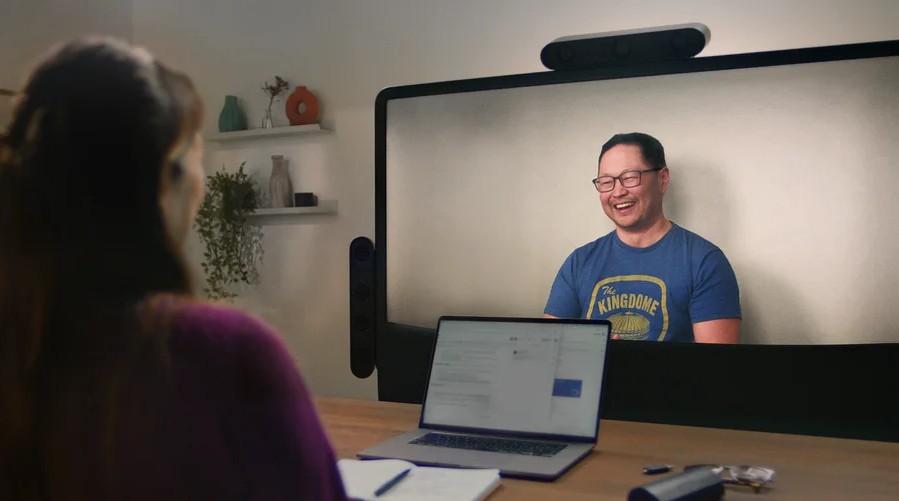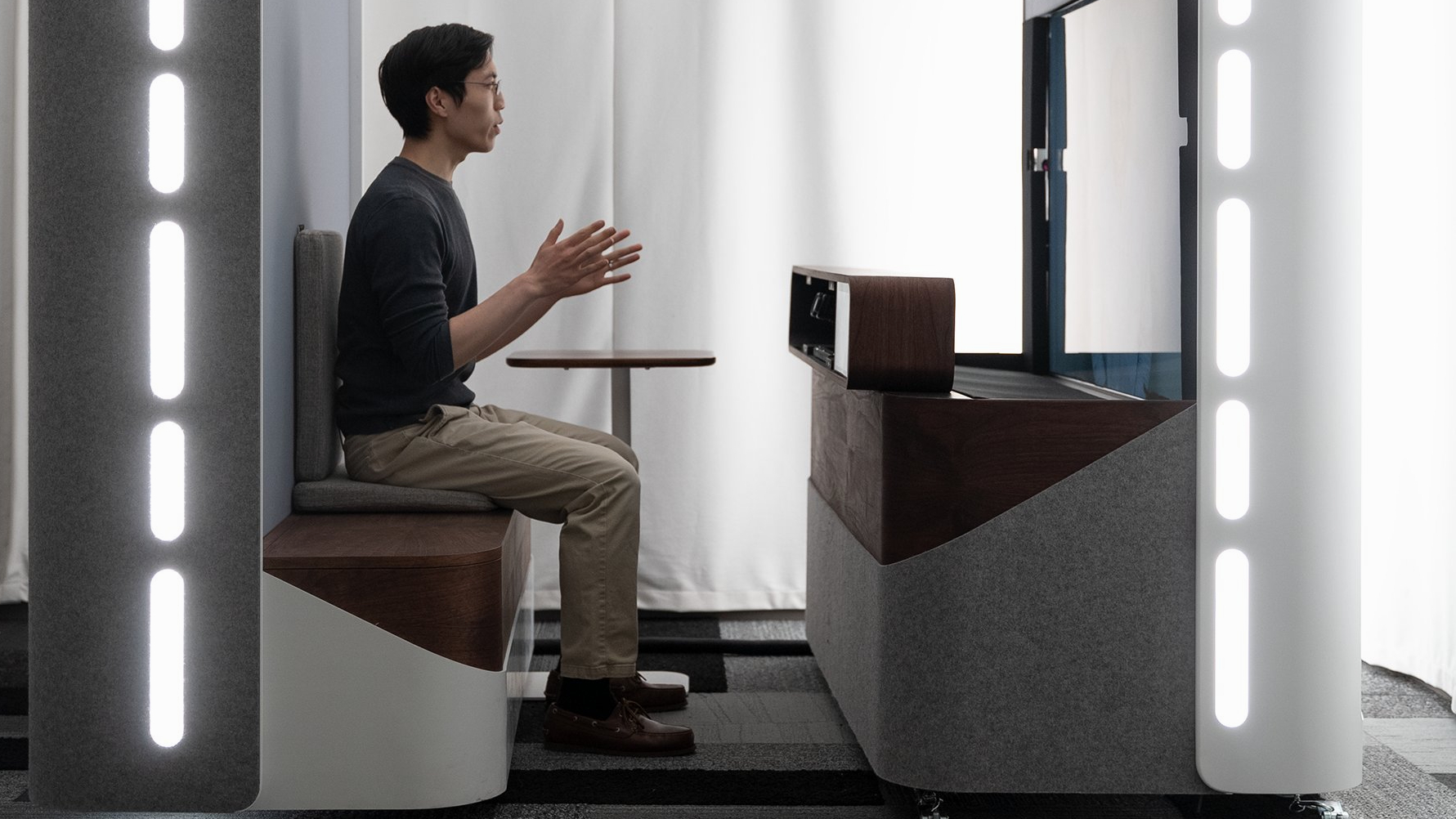Forget webcams — Google's Project Starline supercharges video calls with AI
This could be huge for remote workers

Google’s Project Starline, a videoconferencing system meant to make people in virtual meetings feel as if they’re in front of each other, is getting an AI upgrade.
The announcement was made during Google’s annual I/O conference this week and marks yet another aspect of the company's product offering being infused with AI.
Google explained the remote working tool (which is still in prototype stage) is getting smaller and more practical for everyday use thanks in large part to advancements in AI and machine learning. It could one day become the best Zoom alternative for video calling.
Early Starline prototypes took up an entire room and required specialist hardware to operate. The latest video update of the product suggests that it now looks more like a bulky flatscreen TV that can easily fit into an office or conference room.
How it works
“Our earlier prototype relied on several cameras and sensors to produce a live 3D image of the remote person," explained Google engineer İrem Öz in a teaser video for Project Starline.
"In our new prototype, we have developed a breakthrough AI technique that learns to create a person's 3D likeness and image using only a few standard cameras.”
The latest version of Starline uses advanced AI to build a photorealistic model of a person “and projects that onto a light field display with a unique sense of volume and depth”, according to a Google blog.
Sign up to get the BEST of Tom's Guide direct to your inbox.
Get instant access to breaking news, the hottest reviews, great deals and helpful tips.
Since it was first revealed back in 2021, Project Starline has been meant as a new form of video communication, giving people the sense that whoever they’re calling is right in the room with them. It does this by combining a holographic image with spatial audio.
Project Starline is yet to be released to consumers but it's been tested by select partners like Salesforce, T-Mobile, and WeWork as part of an early access program. Google says its system “is helping them build more personal connections through the distance.”
What to expect

Google’s research on Project Starline looks promising. Tests have shown that conversations between participants had a more natural back-and-forth compared to the more rigid turn-taking in traditional video calls.
Participants also reported a significantly better ability to perceive and convey nonverbal cues in Project Starline.
Better flow and nonverbal communication led people to feel that Project Starline conversations felt more natural. Apparently, the AI-charged video calls also felt less tiring.
Nonetheless, it's useful to remember that Project Starline was introduced to a 2021 world that still had the coronavirus pandemic influencing key decisions. Now, with reports signalling an end to the remote working era and uncertain economic outlooks, it remains to be seen whether companies will readily invest in fancy 3D video calls while some people still struggle with filters and the mute button.
More from Tom's Guide
Christoph Schwaiger is a journalist who mainly covers technology, science, and current affairs. His stories have appeared in Tom's Guide, New Scientist, Live Science, and other established publications. Always up for joining a good discussion, Christoph enjoys speaking at events or to other journalists and has appeared on LBC and Times Radio among other outlets. He believes in giving back to the community and has served on different consultative councils. He was also a National President for Junior Chamber International (JCI), a global organization founded in the USA. You can follow him on Twitter @cschwaigermt.

